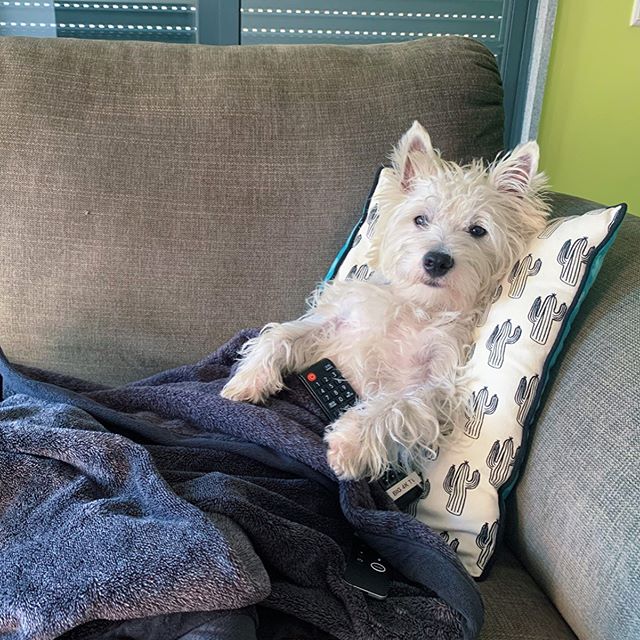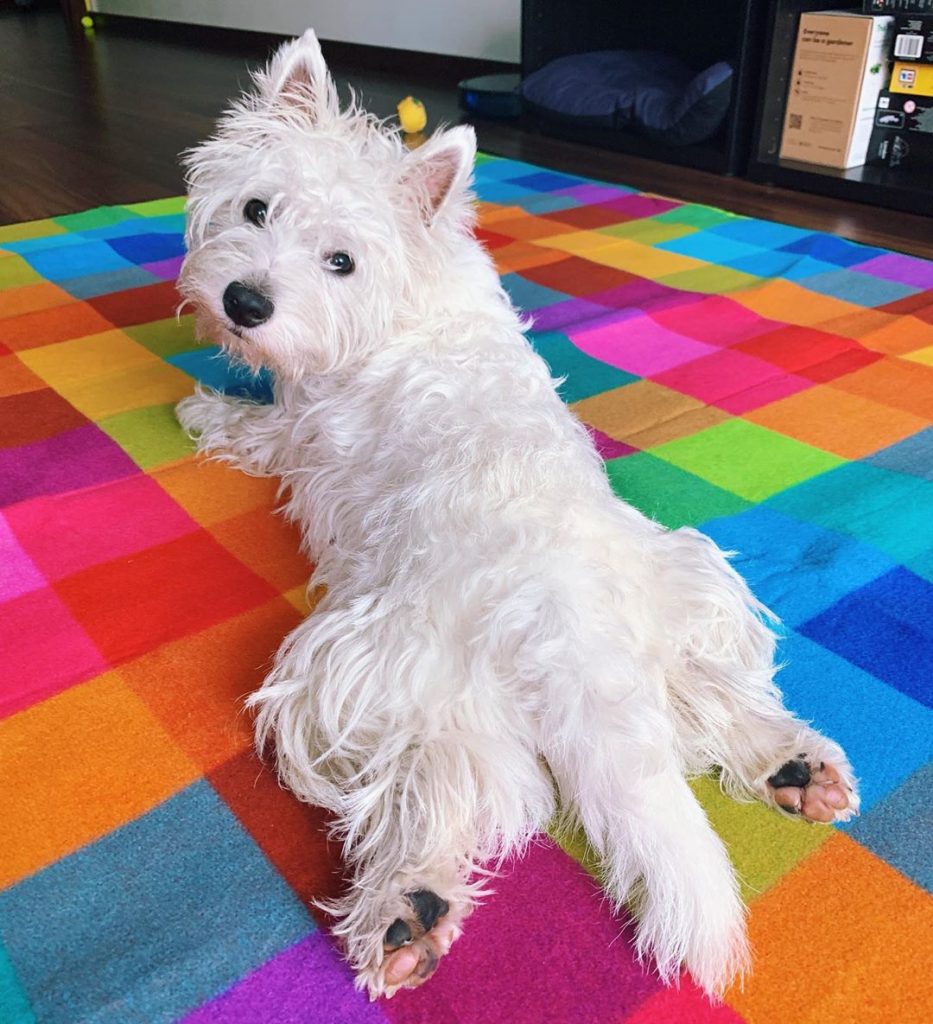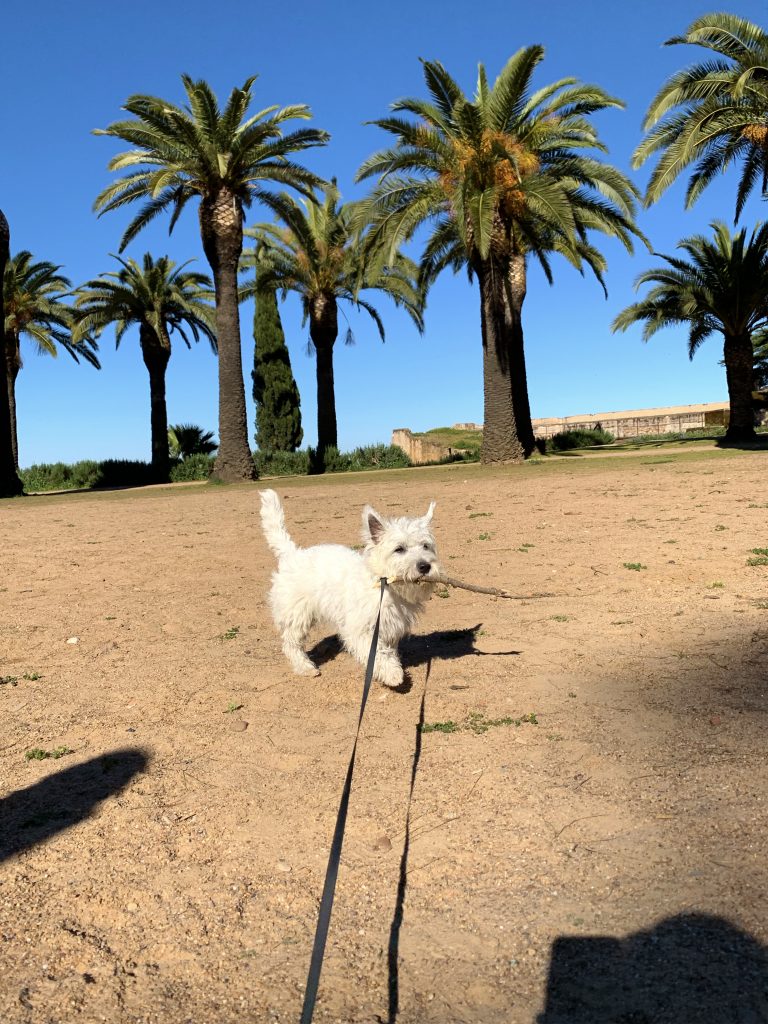
Although it may not be always fun for humans to check on their weight, it’s good to always monitor your Westie’s weight and keep your vet in the loop. Keeping track of your Westie’s weight, whether a pup or a senior, is an easy way for you to track your Westie’s health. Any significant changes in weight can mean health problems and a necessary trip to the vet.
So, how much do Westies Weigh? On average, Westies weigh from 16 to 20 pounds (or 7 kg-10 kg), with males usually being larger and heavier than females. This is the ideal weight range for purebred Westie dogs. Westie mixed breeds have been known to weigh less or more, of course, depending on the mix.
Here’s a video I made about the Westie weight among other things you need to consider when you think about getting a Westie:
Keeping tabs on your Westie’s weight will help you catch health problems as soon as they start but can prevent health problems in the first place. Since Westies are chunky dogs to begin with it is easy for them to get overweight and the owner not be aware of it, especially if their fur is left to grow and will mask their shape. First time owners often mistake a fat Westie for a healthy Westie. Not good. Keeping a Westie at a healthy weight is key to helping your dog live a long, happy life with you.

Health Problems for Fat Westies
Overweight Westies share many of the same health problems as overweight people. These include but are not limited to:
- Arthritis
- Diabetes
- Heart problems
- Respiratory disease
- Patellar luxation (also called trick knee or knee dislocation)
- Aggression (too much energy and not enough exercise might make any dog hyper and may bite or knock into you to get your attention).
So, a fat Westie may look cute but there is nothing cute about the health risks. Fortunately, weight can be managed with diet and exercise –- same way as with people!
How to Tell If Your Westie is Too Fat
Of course, you could just weigh your Westie on a scale but not everyone has a scale or can get a wiggly Westie pup to sit on a scale. You need to weigh yourself, then pick up your pup and weigh the both of you together. The added weight for your second reading is your pup’s weight. Of course, sometimes we don’t want to step on the scale just…because!
Look down on your Westie from above so you can see the sides of his or her belly. If these sides are sticking out, your Westie is WAY too fat. If your Westie has a thick coat, you want to be sure that you are not mistaking the hair for fat. Get down on your knees and feel your dog’s sides through the coat.
How to Tell if Your Westie is Too Thin
A Westie that suddenly loses weight needs to see a vet as soon as possible. If you can see your Westie’s ribs, then he is WAY too thin. This is because it’s hard to see the ribs through a Westie’s thick coat. If your dog has a thick coat, it’s important to get your hands through the coat to feel the ribs. Feeling the ribs are fine. Feeling each vertebra of the spine is NOT.
When animal rescuers assess a Westie suspected of neglect, they have to get their hands on the dog to feel for any fat or prominent ribs. Since neglected dogs and neglected coats often come together, sometimes the coats needs shaving before anyone can accurately check the dog.
Causes of Sudden Weight Loss in Westies
There are many causes of sudden weight loss in dogs and none of them are good. Obviously, if your dog has lost her appetite then she is not getting enough calories to even maintain her weight. However, an appetite loss can also signal a major health problem.
Common causes of weight loss include:
- A side effect of a new medication which may cause nausea and appetite loss
- Puppies still with Mom and littermates not being able to get enough food fast enough with all the other greedy relatives around
- Worms
- Cancer
- Kidney disease
- Stress from a traumatic event like moving or the death of a friend
- Bad teeth – a common problem in small dog breeds like Westies.
Healthy Treats for Westies
Chances are that you’ll have more problems with fat Westies than thin Westies. Westies love their food. This makes treats a great reward for training. However, you don’t want to pile on the calories while your dog is learning how to behave. There are good treats and bad treats. Good treats include:
- Part of your Westie’s dry food ration
- Baby carrots
- Fresh broccoli
- Low-fat cottage cheese
- Cooked squash
- Green beans
- Jerky made from turkey
- Fresh apple slices (NOT dried)
- Dried strips of chicken.
The Importance of Walks
Think you do not need to walk your Westie because you have a big back yard? Think again! Walking not only exercises the body, but the brain. There are all kinds of exciting smells out there! Also, if you have access, westies like beaches, as well.
Walking not only helps keep your Westie fit but also tires him out. If you are having behavioral or training issues with a fat Westie, walk him first and THEN do a training session when he is tired out and more prone to pay attention to you. We already know westies are stubborn, so we need to work around that.

Other Activities for Westies
It’s important to play with your Westie as well as give her walks. This helps keep her fit AND to pay attention to you. You should be the Giver of Good Things like toys, a game of fetch, a swim or a drive. Your Westie will pay more attention to you to be sure she doesn’t miss out on anything you have to offer.
Westies love to dig. Use this to your advantage – if you have a yard. Designate an area that your Westie can dig in. Bury some small low-calorie biscuits in the area to encourage digging. If you find your Westie digging in another area by picking her up and placing her in the digging area. Even dig with your Westie to encourage her. It’s fun exercise and mental stimulation.
How Do I Know If My Westie Is Getting Enough Exercise?
There’s no simple method for knowing when your Westie has had enough. Each Westie will let you now when they are tired in their own way. When Sami was a young puppy, he would just suddenly crash out! He’d bounce around for about 30 minutes or an hour and then THUMP on his side for a 90-minute nap and be off zooming around again.
You basically want to keep your Westie active until they are really panting. If your Westie lies on his side and raises a forepaw in the air as if asking for a belly rub, he’s really asking for a time out. Time to take a break and have a good rest.



